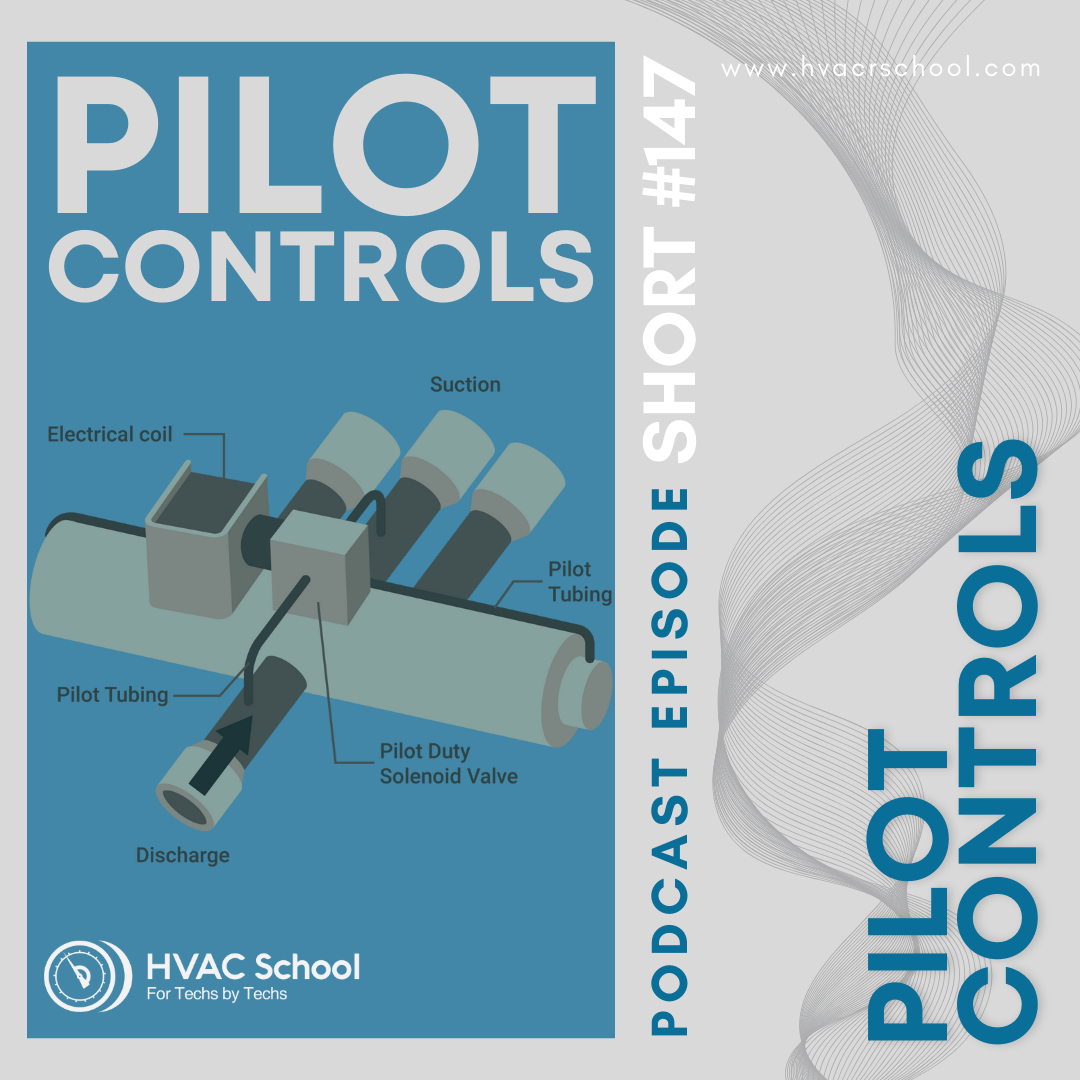Pilot Controls – Short #147

In this short podcast episode, Bryan talks about pilot controls. He talks about the old-school ignition systems on gas appliances and some similar pilot functions on residential A/C units and heat pumps.
When we think about a pilot light on a gas appliance, we can think of it as a small standing flame that sits there ready to ignite the burner whenever gas is flowing. Pilot lights were necessary for old-school gas furnaces, and many of those pilot lights worked with a thermocouple. In many older furnaces, pilots also prevent excessive carbon monoxide from unspent gas. In other words, the pilot is not the main burner; it merely sets up the main burner.
On a typical A/C system, the 24v power is similar to a pilot on a gas appliance; the 24v “pilot” control energizes the system and has a small amount of voltage (compared to the high voltage needed for all of the components to work).
The reversing valve on heat pumps also has a pilot valve; the 24v signal activates the pilot valve with the solenoid, which redirects system pressure to allow discharge gas to slide the valve. That’s also why you can’t shift the operating mode when the system is off. Solenoid valves in general tend to have pilot functions; they rely on a refrigerant pressure differential that results from 24v electrical signals, not the signal itself.
In short, we don’t rely on the pilot light or the 24v electrical signal to power the entire equipment. Pilot controls merely help the equipment get started; they have less load on them and trigger or control parts and processes that are more complicated.
If you have an iPhone, subscribe to the podcast HERE, and if you have an Android phone, subscribe HERE.
Check out our handy calculators HERE.
Author:









Comments
To leave a comment, you need to log in.
Log In